Author Archives: Matthew Prince
Author Archives: Matthew Prince

Today is the 5th anniversary of Cloudflare's Project Galileo. Through the Project, Cloudflare protects—at no cost—nearly 600 organizations around the world engaged in some of the most politically and artistically important work online. Because of their work, these organizations are attacked frequently, often with some of the fiercest cyber attacks we’ve seen.

Since it launched in 2014, we haven't talked about Galileo much externally because we worry that drawing more attention to these organizations may put them at increased risk. Internally, however, it's a source of pride for our whole team and is something we dedicate significant resources to. And, for me personally, many of the moments that mark my most meaningful accomplishments were born from our work protecting Project Galileo recipients.
The promise of Project Galileo is simple: Cloudflare will provide our full set of security services to any politically or artistically important organizations at no cost so long as they are either non-profits or small commercial entities. I'm still on the distribution list that receives an email whenever someone applies to be a Project Galileo participant, and those emails remain the first I open every morning.

Five years ago, Project Galileo was born Continue reading
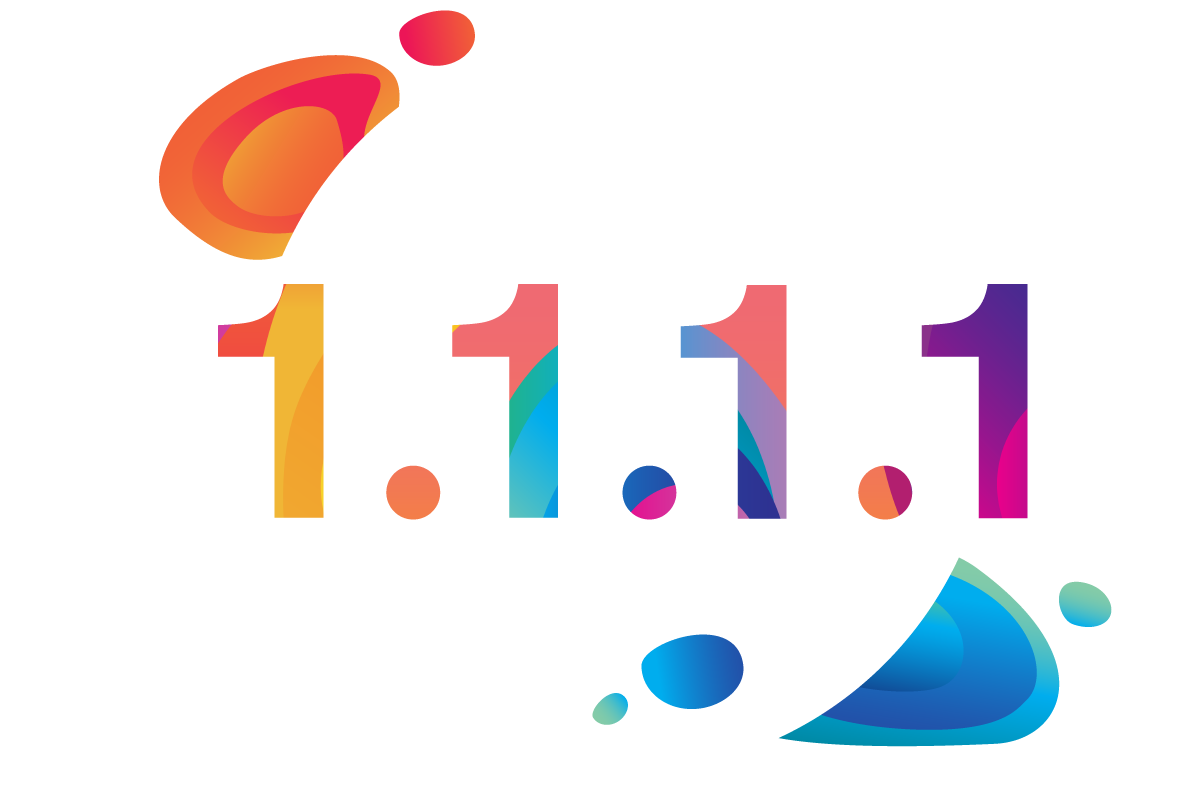

April 1st is a miserable day for most of the Internet. While most days the Internet is full of promise and innovation, on “April Fools” a handful of elite tech companies decide to waste the time of literally billions of people with juvenile jokes that only they find funny.
Cloudflare has never been one for the traditional April Fools antics. Usually we just ignored the day and went on with our mission to help build a better Internet. Last year we decided to go the opposite direction launching a service that we hoped would benefit every Internet user: 1.1.1.1.
The service's goal was simple — be the fastest, most secure, most privacy-respecting DNS resolver on the Internet. It was our first attempt at a consumer service. While we try not to be sophomoric, we're still geeks at heart, so we couldn't resist launching 1.1.1.1 on 4/1 — even though it was April Fools, Easter, Passover, and a Sunday when every media conversation began with some variation of: "You know, if you're kidding me, you're dead to me."
We weren't kidding. In the year that's followed, we've been overwhelmed by the response. Continue reading

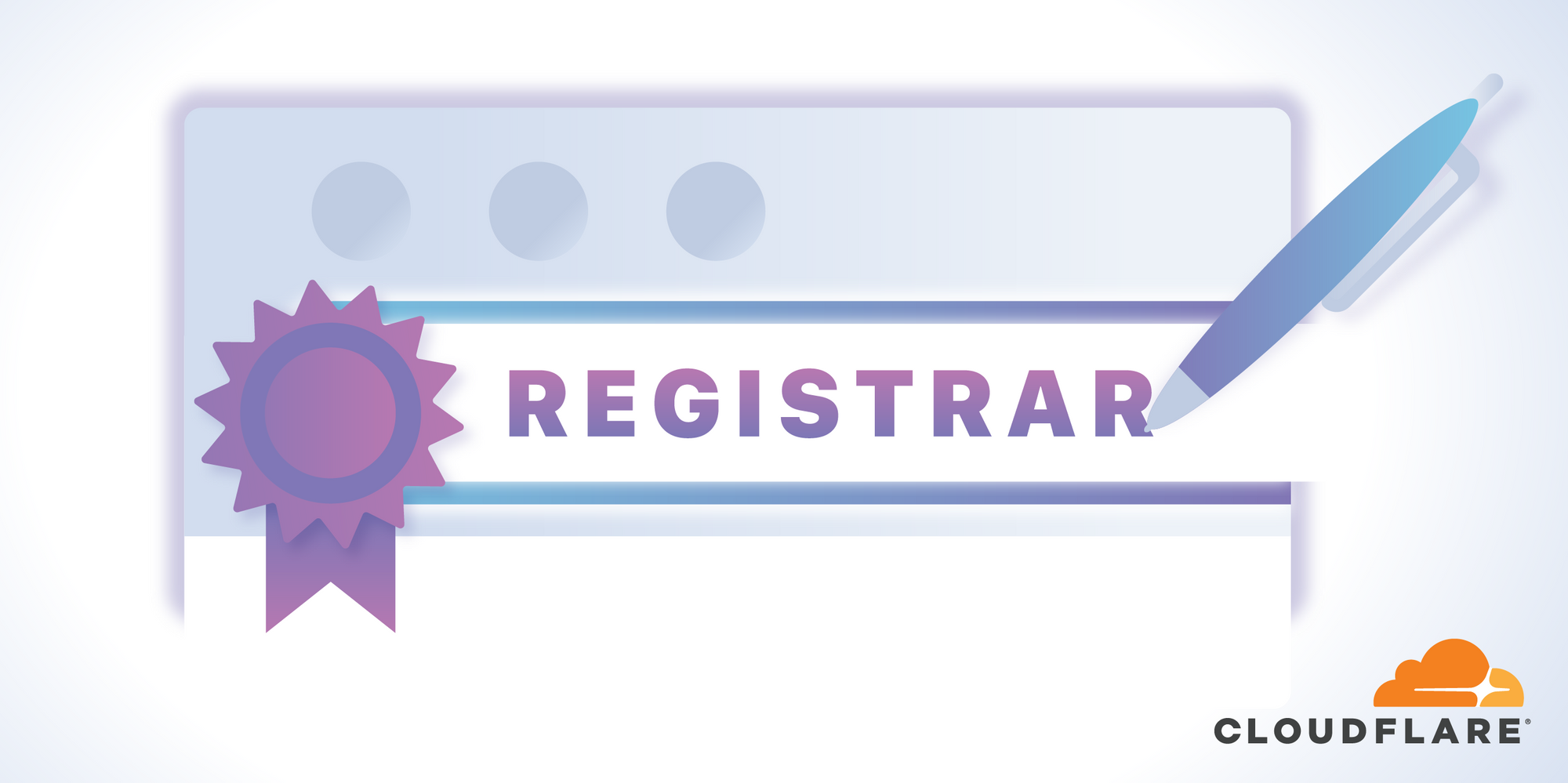
“I love my domain registrar.” Has anyone ever said this? From before Cloudflare even launched in September 2010, our early beta customers were literally begging us: "Will you please launch a registrar too?!" Today we're doing just that, launching the first registrar we hope you’ll be able to say you love. It's built around three principles: trust, security, and always-fair pricing. And it’s available to all Cloudflare customers.
Cloudflare has actually run a registrar for some time. Like many of our best products, it started by solving an internal issue we had. Cloudflare has several mission-critical domains. If the registration of these domains were ever compromised, it would be, in a word, bad.
For years, we worked with our original domain registrar to ensure these domains were as locked down as possible. Unfortunately, in 2013, a hacker was able to compromise several of the systems of the registrar we used and come perilously close to taking over some of our domains.
That began a process of us looking for a better registrar. Unfortunately, even the registrars that charge hefty premiums and promise to be very secure turn out to have pretty lousy security. Continue reading
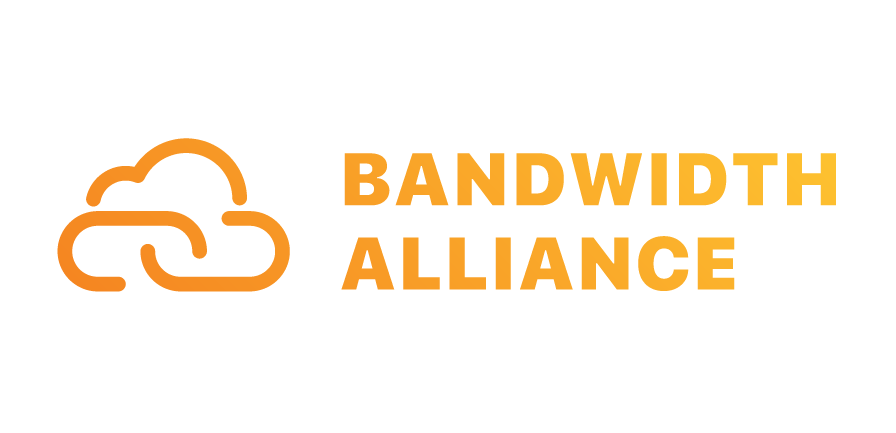
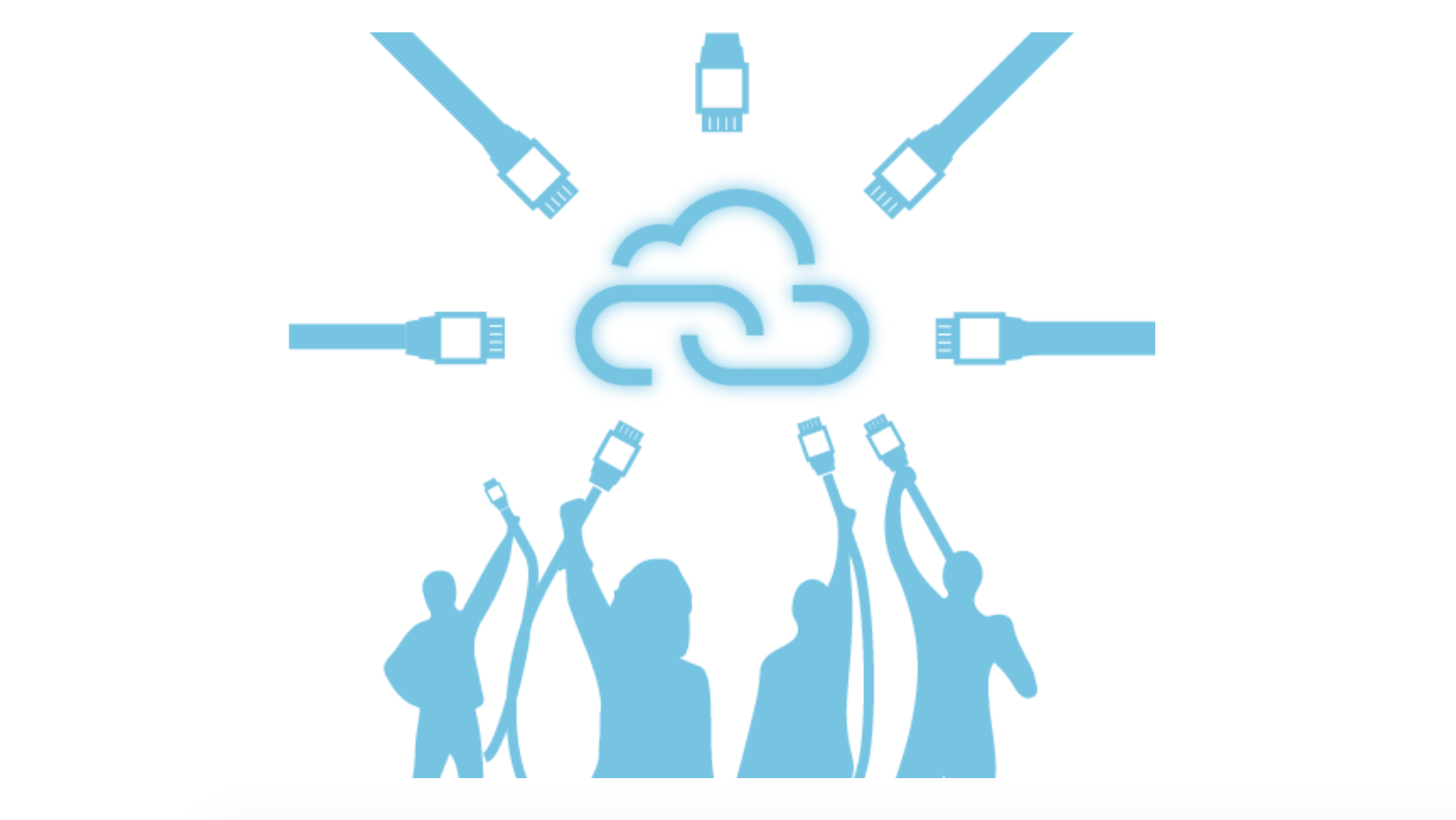
At Cloudflare, our mission is to help build a better Internet. That means making the Internet faster, safer and smarter, but also more efficient alongside our cloud partners. As such, wherever we can, we're on the lookout for ways to help save our common customers money. That got us looking into why and how much cloud customers pay for bandwidth.
If you're hosting on most cloud providers, data transfer charges, sometimes known as "bandwidth” or “egress” charges, can be an integral part of your bill. These fees cover the cost of delivering traffic from the cloud all the way to the consumer. However, if you’re using a CDN such as Cloudflare, the cost of data transfer comes in addition to the cost of content delivery.
In some cases, charging makes sense. If you're hosted in a facility in Ashburn, Virginia and someone visits your service from Sydney, Australia there are real costs to moving traffic between the two places. The cloud provider likely hands off traffic to a transit provider or uses its own global backbone to carry the traffic across the United States and then across the Pacific, potentially handing off to other transit providers along the way, until Continue reading

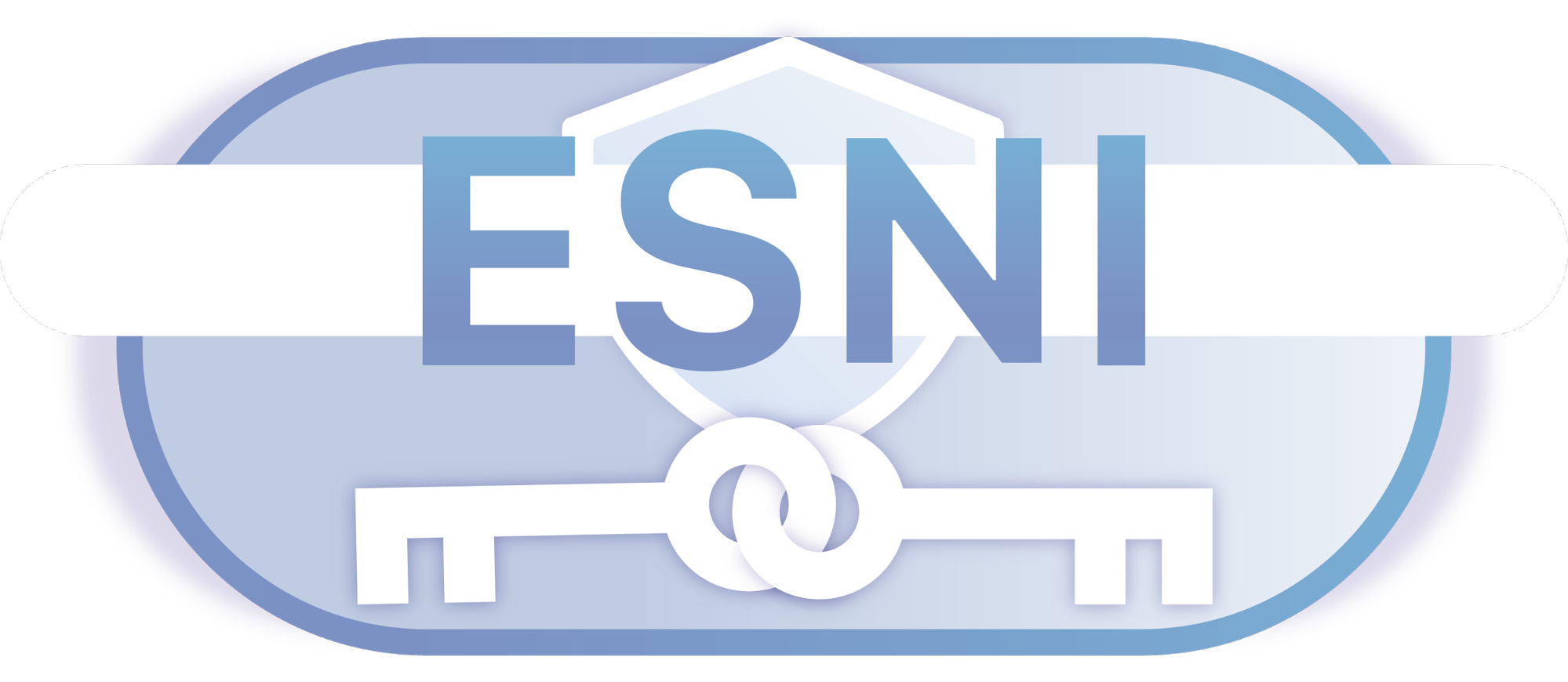
Cloudflare launched on September 27, 2010. Since then, we've considered September 27th our birthday. This Thursday we'll be turning 8 years old.
Ever since our first birthday, we've used the occasion to launch new products or services. Over the years we came to the conclusion that the right thing to do to celebrate our birthday wasn't so much about launching products that we could make money from but instead to do things that were gifts back to our users and the Internet in general. My cofounder Michelle wrote about this tradition in a great blog post yesterday.
Personally, one of my proudest moments at Cloudflare came on our birthday in 2014 when we made HTTPS support free for all our users. At the time, people called us crazy — literally and repeatedly. Frankly, internally we had significant debates about whether we were crazy since encryption was the primary reason why people upgraded from a free account to a paid account.
But it was the right thing to do. The fact that encryption wasn't built into the web from the beginning was, in our mind, a bug. Today, almost exactly four years later, the web is nearly 80% encrypted thanks to Continue reading
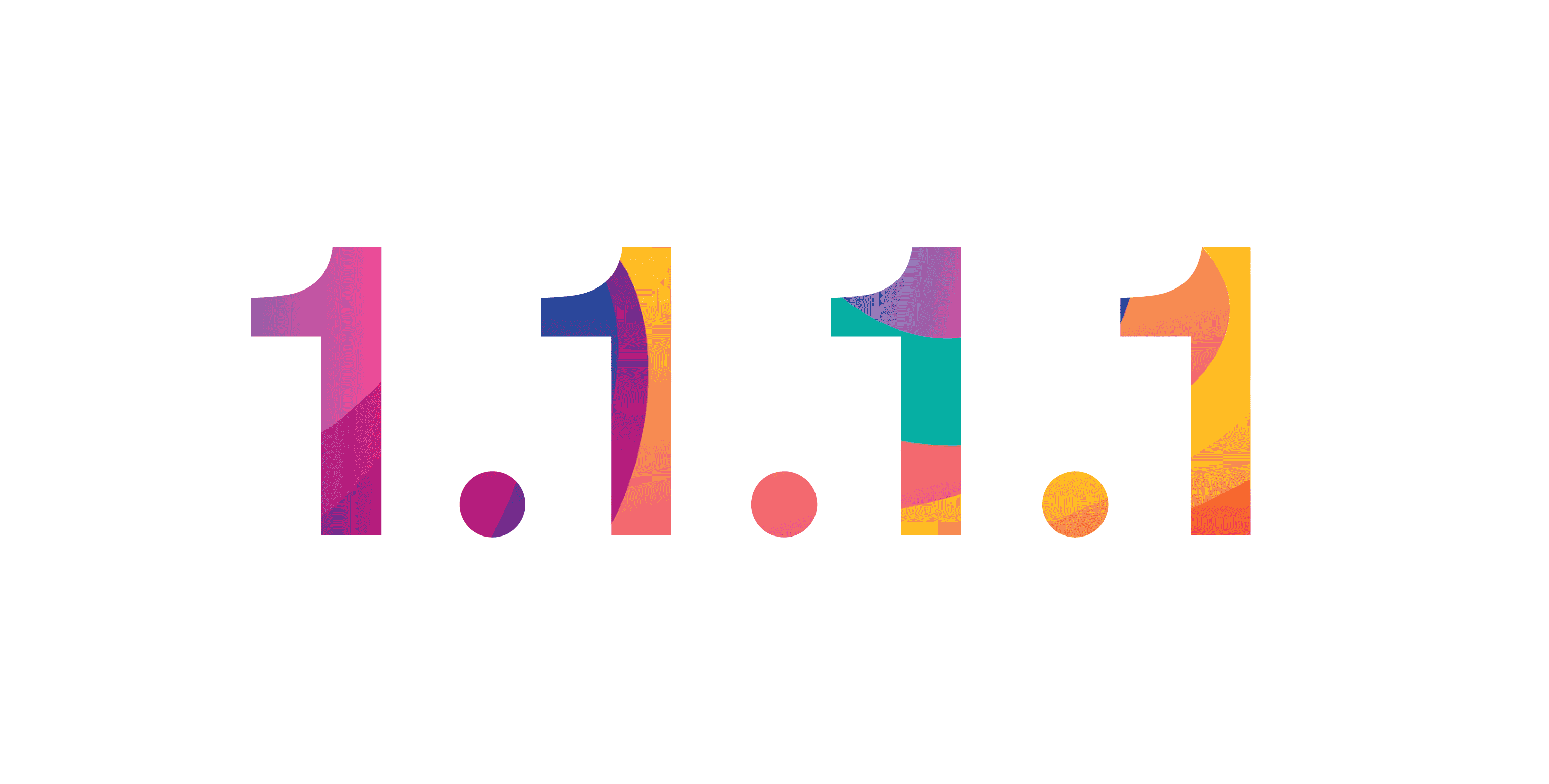
Cloudflare's mission is to help build a better Internet. We're excited today to take another step toward that mission with the launch of 1.1.1.1 — the Internet's fastest, privacy-first consumer DNS service. This post will talk a little about what that is and a lot about why we decided to do it. (If you're interested in the technical details on how we built the service, check out Ólafur Guðmundsson's accompanying post.)
DNS is the directory of the Internet. Whenever you click on a link, send an email, open a mobile app, often one of the first things that has to happen is your device needs to look up the address of a domain. There are two sides of the DNS network: Authoritative (the content side) and Resolver (the consumer side).
Every domain needs to have an Authoritative DNS provider. Cloudflare, since our launch in September 2010, has run an extremely fast and widely-used Authoritative DNS service. 1.1.1.1 doesn't (directly) change anything about Cloudflare's Authoritative DNS service.
On the other side of the DNS system are resolvers. Every device that connects to the Internet needs a DNS resolver. By default, Continue reading
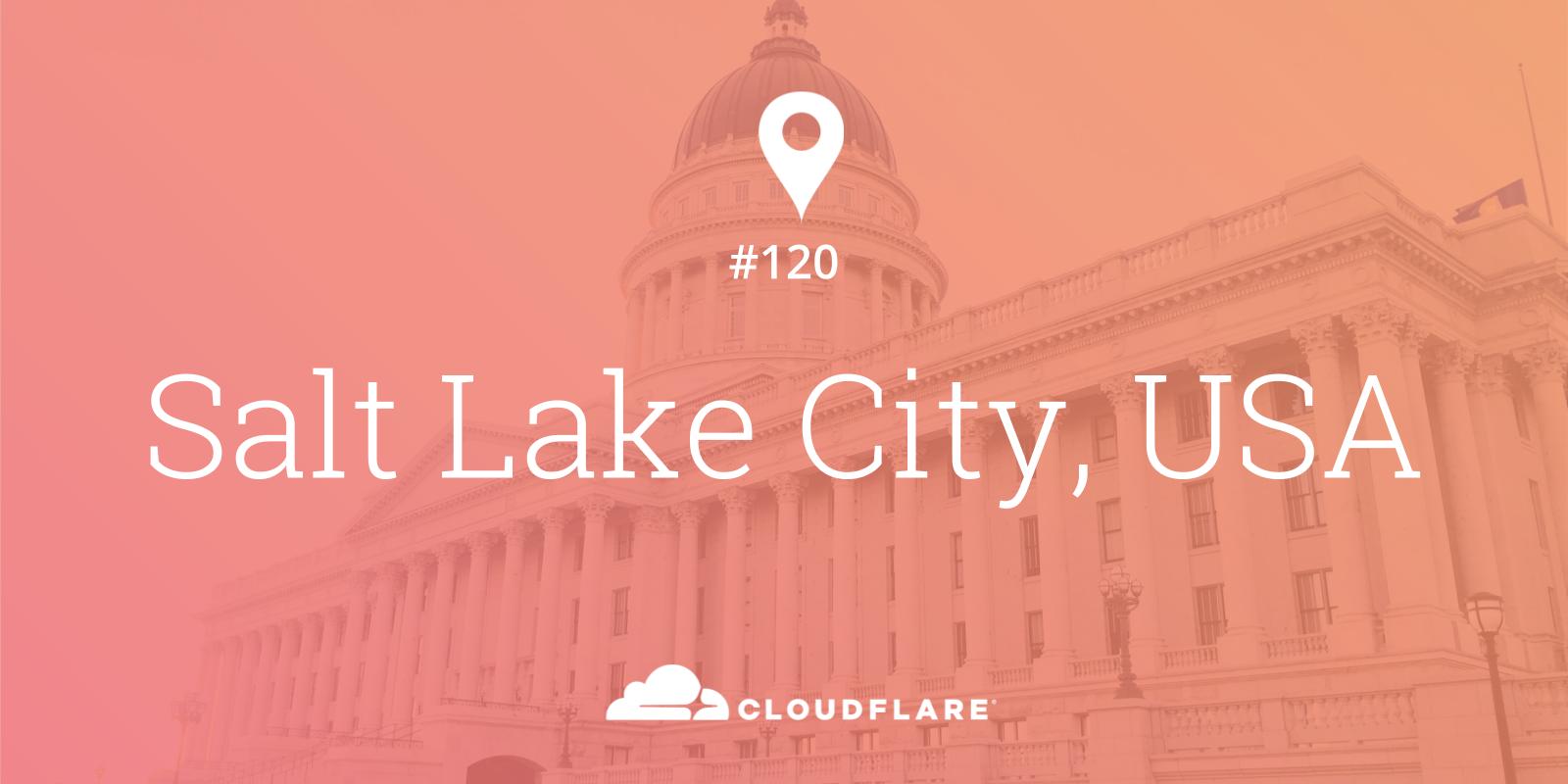
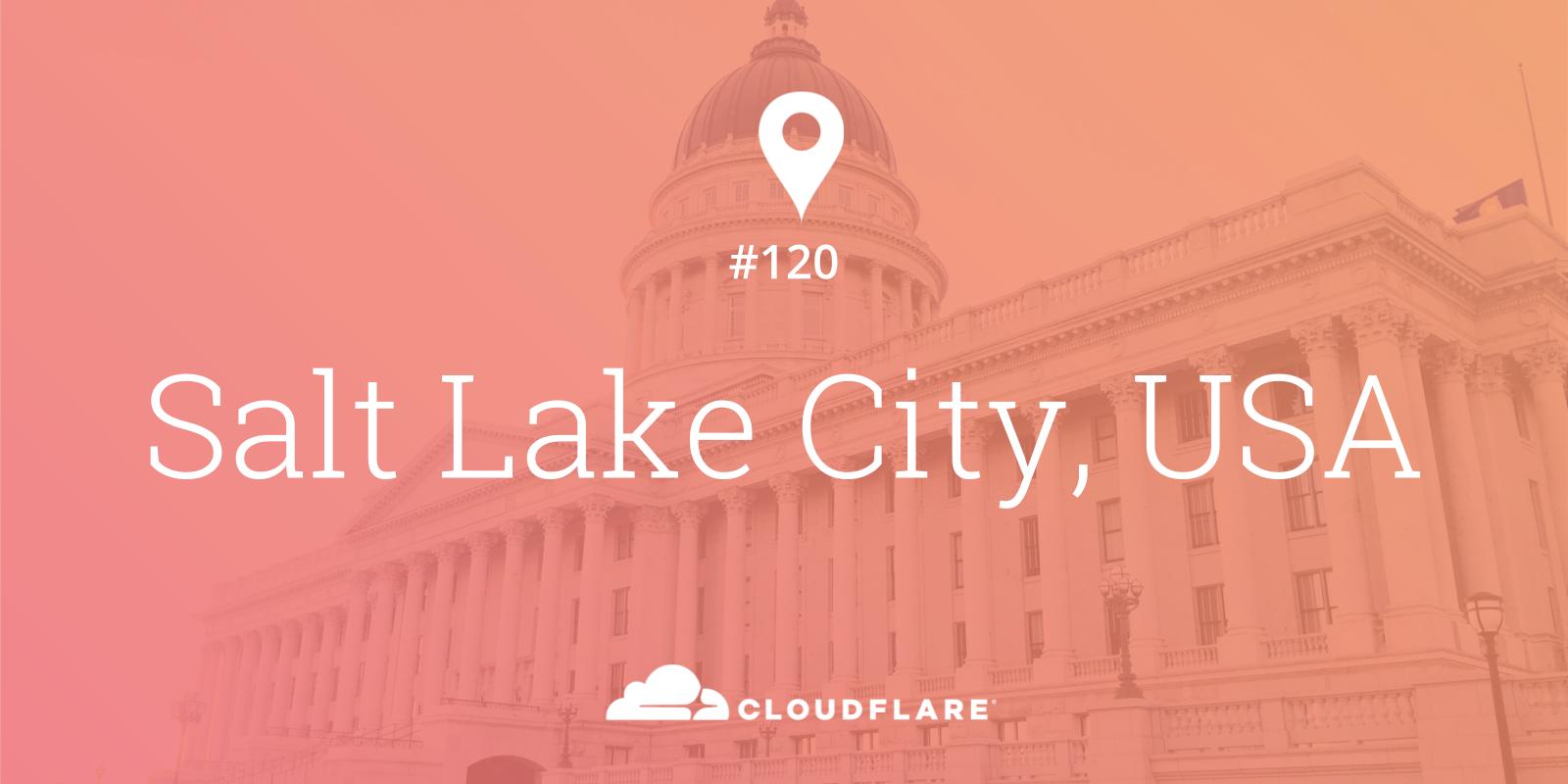
We just turned up Salt Lake City, Utah — Cloudflare's 120th data center. Salt Lake holds a special place in Cloudflare's history. I grew up in the region and still have family there. Back in 2004, Lee Holloway and I lived just up into the mountains in Park City when we built Project Honey Pot, the open source project that inspired the original idea for Cloudflare.
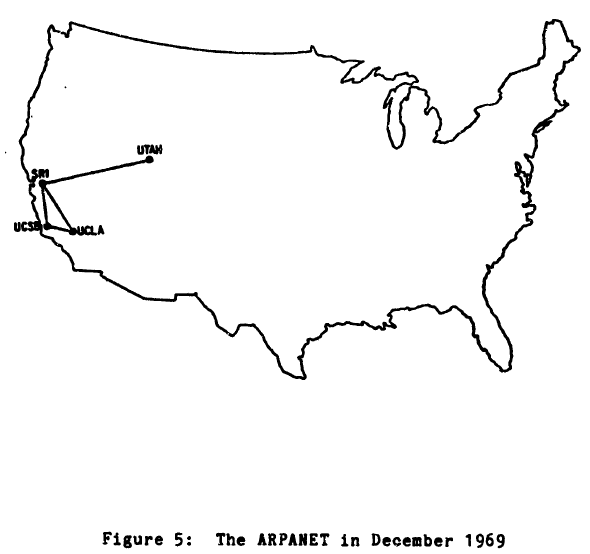
Salt Lake also holds a special place in the history of the Internet. The University of Utah, based there, was one of the original four Arpanet locations (along with UCLA, UC Santa Barbara, and the Stanford Research Institute). The school also educated the founders of great technology companies like Silicon Graphics, Adobe, Atari, Netscape, and Pixar. Many were graduates of the computer graphics department lead by Professors Ivan Sutherland and David Evans.

In 1980, when I was seven years old, my grandmother, who lived a few blocks from the University, gave me an Apple II+ for Christmas. I took to it like a duck to water. My mom enrolled in a continuing education computer course at the University of Utah teaching BASIC programming. I went with her to the classes. Unbeknownst to the Continue reading

Cloudflare turns seven years old today. We launched on September 27, 2010.
It was only a few days after our launch that we got our first request to support video streaming. Yet, until today, we'd avoided it.
Why? Simply put: the video streaming market is screwed up. While there's a lot of money spent on video, there are only really about 1,000 customers that do any meaningful level of streaming.
This is in large part because it's technically far too complicated. If you want to move beyond just uploading your videos to a consumer service like YouTube, then you have to use at least three different services. You need someone to encode your video into a streamable format, you need someone else to act as the content delivery network delivering the bytes, and you need someone else still to provide the player code that runs on the client device. Further, since video encoding standards keep evolving and vary across generations of devices, it becomes challenging to ensure a consistently high quality experience for all visitors.
And if that sounds like a technical mess, the business side is even worse. Encoding companies charge based on CPU usage, which is driven by Continue reading
This is the week of Cloudflare's seventh birthday. It's become a tradition for us to announce a series of products each day of this week and bring major new benefits to our customers. We're beginning with one I'm especially proud of: Unmetered Mitigation.
 CC BY-SA 2.0 image by Vassilis
CC BY-SA 2.0 image by Vassilis
Cloudflare runs one of the largest networks in the world. One of our key services is DDoS mitigation and we deflect a new DDoS attack aimed at our customers every three minutes. We do this with over 15 terabits per second of DDoS mitigation capacity. That's more than the publicly announced capacity of every other DDoS mitigation service we're aware of combined. And we're continuing to invest in our network to expand capacity at an accelerating rate.
Virtually every Cloudflare competitor will send you a bigger bill if you are unlucky enough to get targeted by an attack. We've seen examples of small businesses that survive massive attacks to then be crippled by the bills other DDoS mitigation vendors sent them. From the beginning of Cloudflare's history, it never felt right that you should have to pay more if you came under an attack. That feels barely a Continue reading
 Jango Fett by Brickset (Flickr)
Jango Fett by Brickset (Flickr)
When Blackbird Tech, a notorious patent troll, sued us earlier this year for patent infringement, we discovered quickly that the folks at Blackbird were engaged in what appeared to be the broad and unsubstantiated assertion of patents -- filing about 115 lawsuits in less than 3 years, and have not yet won a single one of those cases on the merits in court. Cloudflare felt an appropriate response would be to review all of Blackbird Tech’s patents, not just the one it asserted against Cloudflare, to determine if they are invalid or should be limited in scope. We enlisted your help in this endeavor by placing a $50,000 bounty on prior art that proves the Blackbird Tech patents are invalid or overbroad, an effort we dubbed Project Jengo.
Since its inception, Project Jengo has doubled in size and provided us with a good amount of high quality prior art submissions. We have received more than 230 submissions so far, and have only just begun to scratch the surface. We have already come across a number of standouts that appear to be strong contenders for invalidating many of the Blackbird Tech patents. This means it is Continue reading
Earlier today, Cloudflare terminated the account of the Daily Stormer. We've stopped proxying their traffic and stopped answering DNS requests for their sites. We've taken measures to ensure that they cannot sign up for Cloudflare's services ever again.
Our terms of service reserve the right for us to terminate users of our network at our sole discretion. The tipping point for us making this decision was that the team behind Daily Stormer made the claim that we were secretly supporters of their ideology.
Our team has been thorough and have had thoughtful discussions for years about what the right policy was on censoring. Like a lot of people, we’ve felt angry at these hateful people for a long time but we have followed the law and remained content neutral as a network. We could not remain neutral after these claims of secret support by Cloudflare.
Now, having made that decision, let me explain why it's so dangerous.
There are a number of different organizations that work in concert to bring you the Internet. They include:

When we started Cloudflare we had no idea if anyone would validate our core idea. Our idea was what that everyone should have the ability to be as fast and secure as the Internet giants like Google, Facebook, and Microsoft. Six years later, it's incredible how far that core idea has taken us.
 CC BY-SA 2.0 image by Mobilus In Mobili
CC BY-SA 2.0 image by Mobilus In Mobili
Today, Cloudflare runs one of the largest global networks. We have data centers in 115 cities around the world and continue to expand. We've built a core service that delivers performance, security, availability, and insight to more than 6 million users.
From the beginning, our goal has been to democratize the Internet. Today we're taking another step toward that goal with the launch of the Cloudflare Apps Platform and the Cloudflare Developer Fund. To understand that, you have to understand where we started.
When we started Cloudflare we needed two things: a collection of users for the service, and finances to help us fund our development. In both cases, people were taking a risk on Cloudflare. Our first users came from Project Honey Pot, which Lee Holloway and I created back in 2004. Members Continue reading

Jengo Fett by Brickset (Flickr)
We knew the case against patent trolls was the right one, but we have been overwhelmed by the response to our blog posts on patent trolls and our program for finding prior art on the patents held by Blackbird Tech, which we’ve dubbed Project Jengo. As we discuss in this post, your comments and contributions have allowed us to expand and intensify our efforts to challenge the growing threat that patent trolls pose to innovative tech companies.
In a little over a week since we started the program, we’ve received 141 separate prior art submissions. But we know there’s an opportunity to find a lot more.
We’ve been impressed with the exceptionally high quality of the submissions. The Cloudflare community of users and readers of our blog are an accomplished bunch, so we have a number of searches that were done by expert engineers and programmers. In one case that stood out to us, someone wrote in about a project they personally had worked on as an engineer back in 1993, which they are convinced is conclusive prior art Continue reading
On March 20th, Cloudflare received our first patent infringement claim: Blackbird Tech LLC v. Cloudflare, Inc. Today we’re filing our Answer to that claim in a federal court in Delaware. We have very strong arguments we will present in the litigation, mostly because the patent asserted against us does not have anything to do with our technology.
The infringement claim is not a close one. The asserted patent, US 6453335 (‘335 patent) was filed in 1998, and describes a system for monitoring an existing data channel and inserting error pages when transmission rates fall below a certain level. Nothing from 1998—including the ’335 patent—comes close to describing our state-of-the-art product that is provisioned via DNS, speeds up internet content delivery, and protects against malicious attackers. Our technology is innovative and different, and Cloudflare’s technology has about 150 patents issued or in process.
We also expect to show that the patent itself is invalid. For example, if the ’335 patent is read broadly enough to cover our system (which shouldn’t happen), it would also cover any system where electronic communications are examined and redacted or modified. But this is not new. Filtering products performing similar functions were around long before Continue reading
 Jengo Fett by Brickset (Flickr)
Jengo Fett by Brickset (Flickr)
As readers of this blog likely know, especially if you read this post, Cloudflare has been sued by a dangerous new breed of patent troll, Blackbird Technologies, asserting a very old and very vague patent. And we know we are not alone in being frustrated about the way that such patent trolls inhibit the growth of innovative companies. Cloudflare is asking for your help in this effort, and we’re putting our money where our mouth is.
Patent trolls take advantage of a system they assume is tilted in their favor, where they can take vague technology patents issued years ago and apply them as broadly as imaginable to the latest technology. And they do this without the limitations of having to show the original patent holder would have actually exercised the patent, because most of them don’t, at all. Patent trolls think they can sit back and pick off settlements from companies because their lawsuits are a nuisance and the costs of defending those suits are considerable.
Changing this dynamic and leveling the playing field is going to require an entirely new approach. Fighting such strong, though perverse, economic incentives is going Continue reading
Last Thursday, ProPublica published an article critiquing our handling of some abuse reports that we receive. Feedback from the article caused us to reevaluate how we handle abuse reports. As a result, we've decided to update our abuse reporting system to allow individuals reporting threats and child sexual abuse material to do so anonymously. We are rolling this change out and expect it to be available by the end of the week.
I appreciate the feedback we received. How we handle abuse reports has evolved over the last six and a half years of Cloudflare's history. I wanted to take this opportunity to walk through some of the rationale that got us to this point and caused us to have a blindspot to the case that was highlighted in the article.
Cloudflare is not a hosting provider. We do not store the definitive copy of any of the content that someone may want to file an abuse claim about. If we terminate a customer it doesn’t make the content go away. Instead, we are more akin to a specialized network. One of the functions of the network that we provide is to add security to the content Continue reading
Last Thursday we released details on a bug in Cloudflare's parser impacting our customers. It was an extremely serious bug that caused data flowing through Cloudflare's network to be leaked onto the Internet. We fully patched the bug within hours of being notified. However, given the scale of Cloudflare, the impact was potentially massive.
The bug has been dubbed “Cloudbleed.” Because of its potential impact, the bug has been written about extensively and generated a lot of uncertainty. The burden of that uncertainty has been felt by our partners, customers, our customers’ customers. The question we’ve been asked the most often is: what risk does Cloudbleed pose to me?
We've spent the last twelve days using log data on the actual requests we’ve seen across our network to get a better grip on what the impact was and, in turn, provide an estimate of the risk to our customers. This post outlines our initial findings.
The summary is that, while the bug was very bad and had the potential to be much worse, based on our analysis so far: 1) we have found no evidence based on our logs that the bug was maliciously exploited before it was patched; Continue reading

In 2017, we've predicted that more than half of the traffic to Cloudflare's network will come from mobile devices. Even if they are formatted to be displayed on a small screen, the mobile web is built on traditional web protocols and technologies that were designed for desktop CPUs, network connections, and displays. As a result, browsing the mobile web feels sluggish compared with using native mobile apps.
In October 2015, the team at Google announced Accelerated Mobile Pages (AMP), a new, open technology to make the mobile web as fast as native apps. Since then, a large number of publishers have adopted AMP. Today, 600 million pages across 700,000 different domains are available in the AMP format.
The majority of traffic to this AMP content comes from people running searches on Google.com. If a visitor finds content through some source other than a Google search, even if the content can be served from AMP, it typically won't be. As a result, the mobile web continues to be slower than it needs to be.
Cloudflare's Accelerated Mobile Links helps solve this problem, making content, regardless of how it's discovered, app-quick. Once enabled, Accelerated Mobile Continue reading
In 2011 we launched the Cloudflare Apps platform in an article that described Cloudflare as “not ... the sexiest business in the world.” Sexy or not, Cloudflare has since grown from the 3.5 billion pageviews a month we were doing then to over 1.3 trillion per month today. Along the way, we’ve powered more than a million app installations onto our customer’s websites.

For the last 6 years Cloudflare has been focused on building one of the world’s largest networks. The importance of that work has not left as much time as we would have liked to improve our app platform. With just 21 apps, we knew we were not delivering all that our marketplace could offer.
About six months ago, we were introduced to the team at Eager. Eager was building its own app store for installation onto any website. They impressed us with their ability to enable even the most non-technical website owner to install powerful tools to improve their sites through a slick interface. Eager’s platform included the features we wanted in our marketplace, like the ability to preview an app on a user's site before installing it. Even better, Eager had a powerful app Continue reading
The last few weeks have seen several high-profile outages in legacy DNS and DDoS-mitigation services due to large scale attacks. Cloudflare's customers have, understandably, asked how we are positioned to handle similar attacks.
While there are limits to any service, including Cloudflare, we are well architected to withstand these recent attacks and continue to scale to stop the larger attacks that will inevitably come. We are, multiple times per day, mitigating the very botnets that have been in the news. Based on the attack data that has been released publicly, and what has been shared with us privately, we have been successfully mitigating attacks of a similar scale and type without customer outages.
I thought it was a good time to talk about how Cloudflare's architecture is different than most legacy DNS and DDoS-mitigation services and how that's helped us keep our customers online in the face of these extremely high volume attacks.
Before delving into our architecture, it's worth taking a second to think about another analogous technology problem that is better understood: scaling databases. From the mid-1980s, when relational databases started taking off, through the early 2000s the way companies thought of scaling Continue reading